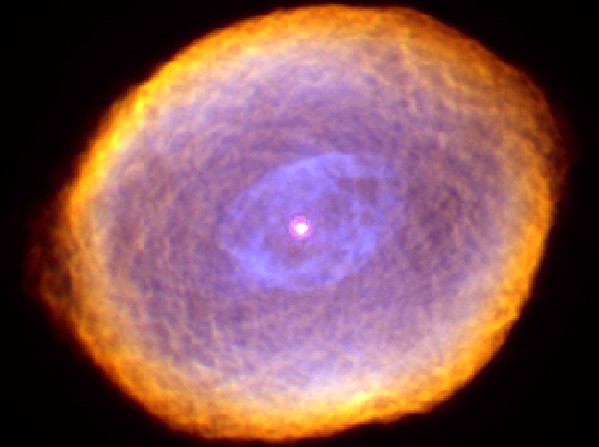
|
Explanation: What is creating the strange texture of IC 418? Dubbed the Spirograph Nebula for its resemblance to drawings from a cyclical drawing tool, planetary nebula IC 418 shows patterns that are not well understood. Perhaps they are related to chaotic winds from the variable central star, which changes brightness unpredictably in just a few hours. By contrast, evidence indicates that only a few million years ago, IC 418 was probably a well-understood star similar to our Sun. Only a few thousand years ago, IC 418 was probably a common red giant star. Since running out of nuclear fuel, though, the outer envelope has begun expanding outward leaving a hot remnant core destined to become a white-dwarf star, visible in the image center. The light from the central core excites surrounding atoms in the nebula causing them to glow. IC 418 lies about 2000 light-years away and spans 0.3 light-years across. This false-color image taken from the Hubble Space Telescope reveals the unusual details.
|
January February March April May June July August September October November December |
| |||||||||||||||||||||||||||||||||||||||||||||||||||||||
NASA Web Site Statements, Warnings, and Disclaimers
NASA Official: Jay Norris. Specific rights apply.
A service of: LHEA at NASA / GSFC
& Michigan Tech. U.
Based on Astronomy Picture
Of the Day
Publications with keywords: IC 418 - spirograph - planetary nebula
Publications with words: IC 418 - spirograph - planetary nebula
See also:
- APOD: 2025 April 15 Б Planetary Nebula NGC 1514 from Webb
- Planetary Nebula Abell 7
- The Medusa Nebula
- Jones Emberson 1
- APOD: 2024 February 12 Б HFG1 & Abell 6: Planetary Nebulae
- APOD: 2023 December 24 Б NGC 2440: Cocoon of a New White Dwarf
- APOD: 2023 October 3 Б MyCn 18: The Engraved Hourglass Planetary Nebula
